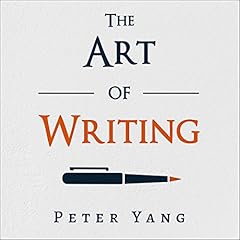
Concerning the Spiritual in Art
No se pudo agregar al carrito
Add to Cart failed.
Error al Agregar a Lista de Deseos.
Error al eliminar de la lista de deseos.
Error al añadir a tu biblioteca
Error al seguir el podcast
Error al dejar de seguir el podcast
Obtén 3 meses por US$0.99 al mes
 Exclusivo para miembros Prime: ¿Nuevo en Audible? Obtén 2 audiolibros gratis con tu prueba.
Exclusivo para miembros Prime: ¿Nuevo en Audible? Obtén 2 audiolibros gratis con tu prueba.
Compra ahora por $6.95
-
Narrado por:
-
David Pickering
- This edition contains a biographical preface of the book's author.
Pioneering and Exploring the Spiritual Revolution in Modern Art
In the early 20th century, the pioneering and celebrated painter Wassily Kandinsky (1866-1944) wrote this groundbreaking work advocating a powerful role for spirituality in driving the creation of modern art. Voicing his own strong opinions as well as the philosophical passions of his peers, Kandinsky urged traditional artists to break free from the limiting restraints of the material world in their work. By faithfully using their own uninhibited thoughts and inner emotions for inspiration—essentially channeling the human spirit instead of representing material concerns—he believed that artists could transcend the norms of the time to reach new levels of abstract expression and aesthetic beauty. Likewise, he also challenged the viewing public to admire art with a fierce spiritual hunger.
With insightful explorations of form and color theory, creative inspiration, psychology, religion, music, ethics, and even politics, Kandinsky makes a strong case for his artistic revolution. The movement he inspired with his theories played a pivotal role in the development of modern art, particularly in the growth and evolution of abstract painting.
Featuring an enlightening introduction by the book's translator, Michael T. H. Sadler, providing generational and cultural context for Kandinsky and his work, Concerning the Spiritual in Art gives testimony to the mind and creative expression of Kandinsky and other artists of his generation. This seminal and thought-provoking book exploring the heart of the artistic endeavor belongs in the library of every serious artist and student of modern art.
©1914 Constable and Company Limited (P)2023 Licensing Management, Inc.Los oyentes también disfrutaron:




















Las personas que vieron esto también vieron:


















t whoever who introduces the book glosses…
If reaching the general public is your aim, try just one line from the intentionally-very broad history
(I think it’s the 1880s to the 1940s, have not been buried in it for a while— my loss!) of George Heard Hamilton… just this one e.g. of WHAT CÉZANNE DID … created, through his life-long, witheringly modest process — I can only hope that either this person who has zoomed on with the hubris (I feel my upset at the flippant, fantastically inadequate
self-canonized to warrant doing such an introduction…. Anyway, exhaustion is going to be the winner tonight.
—since yours reads like… I don’t know… the Incredible Hulk wielding sandpaper… GHH characterized Cézanne’s built up architectonics (whether in a lemon, an onion, an apple, his studio rising up phenomenologically to engulf the great Cupid standing amid, only slightly poised onions.
Long story short, GHH’s gorgeous and I’d wager unrivaled for what it it is and is meant to be… DRUM ROLL…. When you’re looking at every brush stroke inserted and instantiated with such profound intention, GHH (reminder to the younger, that’s George Heard Hamilton — the characterization was this: [essentially the way Cézanne built and built the radically anti Renaissance … cutting now instantly to the chase: each of Suzanne‘s brush throats were mounting into “the cumulative deposit of successive instantaneities. Rock on theeee man from Aix
Last thing cause I can’t imagine where else I’ll have to put it is that a number of people said “says apples are like cannonballs“ – so as far as I know the first one to make that one was Barnett Newman and with no component, Richard Sarah said it many years later as though pure as the difference so all of this to me says still has possibly forever to be reckoned with
Possibly proofread all of this, but I hope the most important Salvatore elements come across
A not inestimable detail
Se ha producido un error. Vuelve a intentarlo dentro de unos minutos.


